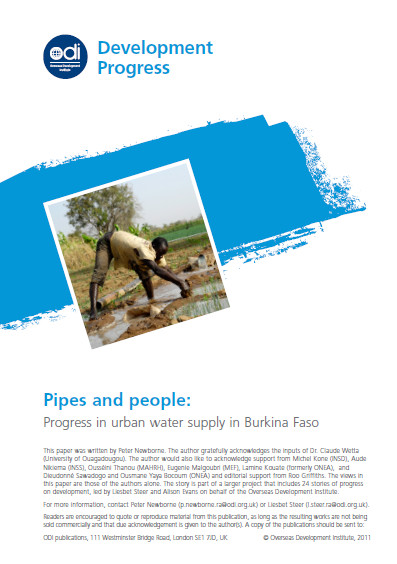Pipes and people: Progress in urban water supply in Burkina Faso
 |
rapport Jun 2011 ; 16 pages
Aut. Peter Newborne
Ed. ODI - London
Téléchargeable sous format: PdF
Téléchargeable chez l'éditeur
Page de présentation d'un éditeur
Abstract:
In 1998, the government identified this as a policy priority and highlighted the strengthening of the National Office for Water and Sanitation (ONEA) as key. ONEA had been converted in 1994 into a state-owned company, run according to commercial principles, with a Board of Directors and enhanced autonomy to manage its activities across all urban centres of the country. In 2001, ONEA was still a small utility, with some 73,000 active household connections serving fewer than 700,000 people nationwide, just one-third of the urban population - essentially wealthy customers - and 1,600 public standpipes serving another half a million urban residents.
Government policy recognises the social, as well as economic, nature of urban water, confirmed in 2004 in the second generation poverty reduction strategy paper. Subsequently, the National Programme for Water Supply and Sanitation referred to the need to investigate low-cost solutions to provide water services to peri-urban districts, in line with poverty reduction goals. It established a target under the Millennium Development Goals (MDGs) of increasing drinking water access in urban centres in Burkina to 87% by 2015, from a base of 42% (all types of service) in 2000.
Mots clefs: |
approvisionnement en eau (CI) (DT) (OP) (ope) , gestion - management (CI) (DT) (OP) (ope) , objectifs du millénaire (CI) (DT) (OP) (ope) , urbain (CI) (DT) (OP) (ope) |
Pays concerné: |
Editeur/Diffuseur: |
|
ODI
-
Overseas Development Institute - London - Royaume Uni |
En cas de lien brisé, nous le mentionner à communication@pseau.org